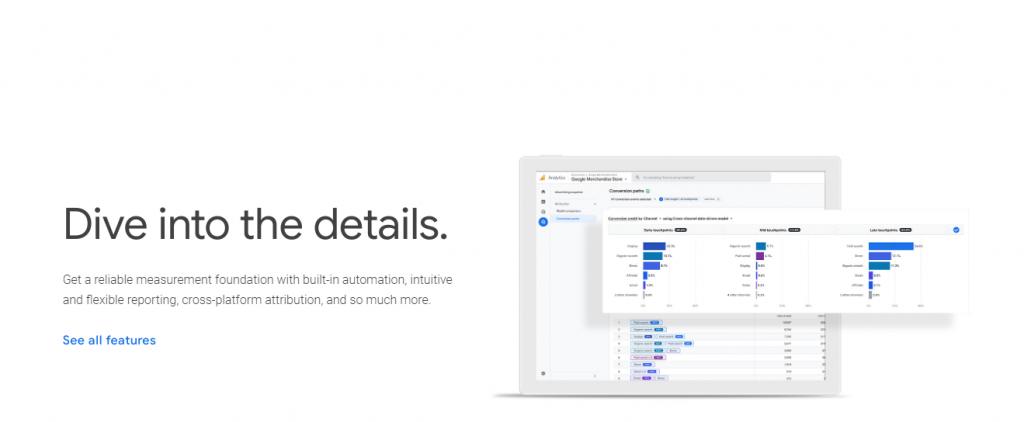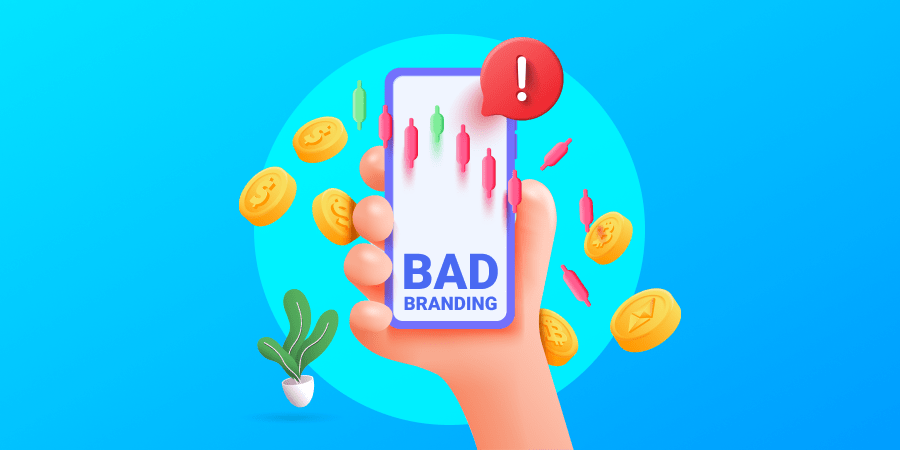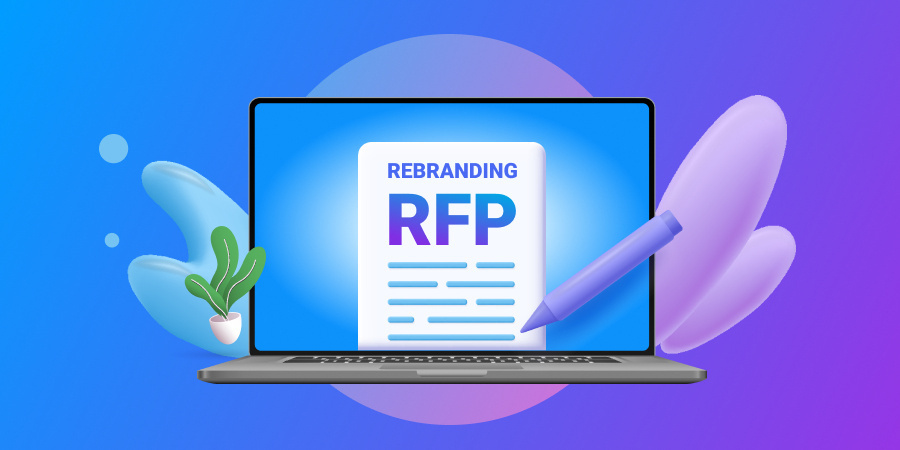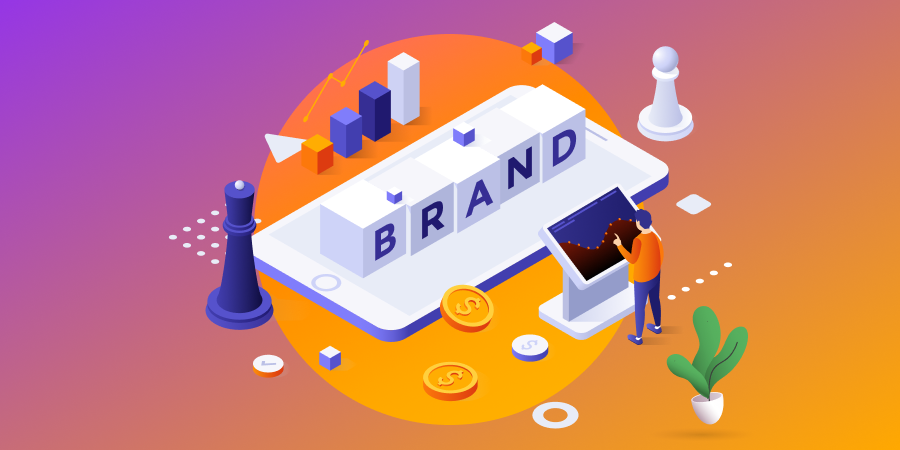You can have the best product in the world, or offer superb services, but it can all go to waste if your business is not properly exposed to the right audience.
There’s no magic formula for building brand awareness. The marketing strategies that work for one business might not work for yours. It is a process that requires a lot of patience, fine-tuning and consistency.
This is why knowing how to measure brand awareness is one of the key aspects of your business’s growth and sustainability. By monitoring it over time, you can evaluate the effectiveness of your marketing efforts and make necessary changes to improve your brand’s visibility and reach.
In this article, we’ll explore the importance of measuring brand awareness, discuss essential metrics to track and provide valuable tips on how to build brand awareness for your business.
Let’s get started!
Digital Silk develops authentic brands. Request A Quote
How To Measure Brand Awareness
To set a solid foundation, let’s start by covering some basics.
What Is Brand Awareness?
Brand awareness refers to the consumers’ level of familiarity with a particular brand. It can be influenced by various factors, such as advertising, social media presence, word-of-mouth marketing, product quality and more.
Simply put, it is a measure of how well-known and recognizable your brand is among your target audience.
Brand Awareness vs. Brand Recognition vs. Brand Loyalty
Brand recognition, brand awareness and brand loyalty are three important marketing concepts that are related but not the same.
Brand recognition focuses on the customers’ ability to easily recognize and distinguish your brand from other brands in the market. It encompasses all the visual and verbal elements of your brand, such as your logo, name, and tagline.
In contrast, brand awareness goes beyond recognition to include a deeper understanding of what your brand stands for and why it is unique. Customers don’t just know your logo and name, but also your product features, benefits and values.
Brand loyalty is the ultimate goal of all businesses. It reflects the customers’ inclination to repeatedly purchase and advocate for a specific brand, even when other options are available.
If we were to rank these three terms by the level of customer involvement and devotion, the order would be:
- Brand recognition
- Brand awareness
- Brand loyalty
Five Tactics You Can Use To Measure Brand Awareness
Let’s see what tactics you can use to measure brand awareness:
1. Perform Regular Brand Awareness Surveys
Surveys are an effective way to measure brand awareness, as they allow you to collect data directly from your target audience.
The brand awareness survey should be created with a clear strategy so it can yield accurate and relevant insights. Here are five steps to take to ensure it doesn’t miss the target:
- Define the purpose and scope of your survey: Start by defining the objectives of the survey and the target audience.
- Create a survey questionnaire: You can opt for different types of survey forms, including open-ended (allowing respondents to answer questions in their own words), closed-ended questions (providing respondents with multiple answer choices) or rating scales (asking the respondents to rate a brand on a numerical scale).
- Choose a survey method: You can conduct it online, over the phone, or in person.
- Test the survey: Before launching the survey, try testing it with a small focus group to ensure that all the questions are clear and easily understandable.
- Launch the survey: Once you’ve tested the survey, launch it to your target audience. And don’t forget to provide clear instructions for your respondents.
2. Examine Your Social Media Followers
The number of your social media followers, aka vanity metric, can provide valuable insights into the scope of your brand awareness.
It will give you a sense of how broad your reach is and how many people are familiar with your brand.
If people are following your business on social media, it suggests they’re interested in what you have to offer. They are more likely to engage in your social media content and ultimately recommend your brand to others.
You can examine your posts to see what kind of content gets the most attention and the time of day when your followers are most active. Use these insights to adjust your social media marketing accordingly.
3. Employ Social Listening
Measuring brand awareness on social platforms goes beyond examining your social media followings.
Monitor online platforms to see what people are saying about your brand, and where.
This practice, known as social listening, allows you to eavesdrop on organic conversations to gain valuable insights into how people perceive your brand.
Social listening is particularly useful because it helps overcome the issue of biased responses that can often occur in surveys.
In addition, social listening offers a wealth of data to help you identify emerging trends and monitor your brand reputation.
4. Keep An Eye On Your Content Marketing Performance
It’s essential to monitor the performance of your content marketing efforts to determine if it’s affecting your brand recognition in a positive way.
Try focusing on the following:
- Track the position of strategic keywords to monitor how your targeted keywords rank in search engine result pages (SERPs) over time.
- Check your online visibility to measure how frequently your content appears in search results.
- Mind the cannibalization health to determine how well your website pages are optimized for avoiding competition with each other for the same keywords.
5. Use Google Analytics
Google Analytics is a powerful tool that can help you measure the success of your brand marketing and brand awareness campaigns–and the best part is that it’s free.
Some of the key features of Google Analytics are:
- Real-time reporting for monitoring activity on your website as it happens
- User acquisition for discovering how users reach your site
- Conversion report for looking at how your marketing channels are working together to drive conversions
- Cohort exploration for gaining insights into the users’ behavior
- User exploration for selecting specific groups of users and understanding how they interact with your website
- User lifetime for exploring customer lifetime value

Why Measure Brand Awareness?
Is it worth investing this much effort into measuring brand awareness? In short, yes. You will gain valuable insights that you can use to improve your business’s overall performance.
More specifically, measuring brand awareness will help you:
- Discover how well your marketing campaigns are performing
- Track customer satisfaction
- Assess the levels of customer loyalty
- Identify potential new customers
- Build brand awareness strategies based on reliable data
- Identify weaknesses of your brand awareness strategy
- Find ways to promote your content better
- Observe your community’s growth
7 Key Brand Awareness Metrics To Keep Track Of
Here are some key brand awareness metrics that you should monitor closely to evaluate the performance of your marketing strategies:
1. Brand Impressions
Brand impression metric defines how many times people see or come across your brand name or logo in their daily life, through advertising, social media, public relations, or any other means of marketing communication.
Most social platforms will allow you to gather impression data directly on your post’s analytics. For instance, you can see your posts’ impression data on Instagram by clicking on “Insights” on your business profile page.
On Facebook, you can check the impressions metric in the following way:
- Go to your Facebook business page
- Find the “Manage page: sidebar on your Facebook business page
- Click on the “Page Insights” button
- On the left sidebar of the screen, select “Posts”
- Switch from “Reach: Organic/Paid” to “Impressions: Organic/Paid”
You will find that Facebook impressions are split into two main categories:
- Organic: Indicates how many times your posts have been displayed in people’s News Feed organically.
- Paid: This shows the number of times people stumbled upon your paid content on their pages.
On Twitter, you can use Twitter analytics to calculate the number of times your tweet appeared in someone’s timeline or search results for the past 30 days. However, it doesn’t count unique views, so if one person sees your tweet multiple times, each view is calculated as a separate impression.
2. Brand Reach
Brand reach is often confused with brand impressions.
Brand reach measures the number of unique users who have seen your content, while brand impressions are the total number of times your content has been displayed.
For example, if one unique user saw your post twice, your reach would be one and your impressions would be two.
3. Brand Mentions
Brand mentions refer to the instances when your brand’s name, product, or service is referenced or discussed online, such as on social media, in news articles, blogs, forums or other websites.
These mentions can be either positive or negative and can provide you with valuable insights into the public’s perception of your brand.
You can measure your brand mentions through social listening tools such as BrandMentions, Brand24 or SentiOne.
4. Social Media Engagement Rate
Social media engagement rate metric measures the level of interaction your users have with your social media content.
You calculate the social media engagement rate by dividing the total number of engagements (likes, comments, shares and so on) by the total number of your followers and multiplying the result by 100 to get the percentage.
Example: You have 10,000 followers on Facebook and your post receives 150 likes, 200 comments and 100 shares. Your social media engagement rate is calculated as:
Engagement Rate = (150+200+100) / 10,000 x 100% = 450 / 100,000 x 100% = 4.5%
5. Share Of Voice (SOV)
Share of voice metric allows you to compare your brand awareness on different marketing channels against your competitors.
With this metric, you can get an insight into how well your ads, social media mentions, website traffic and other brand awareness metrics perform against your competition.
The formula for calculating SOV is:
SOV = Your brand’s measures / Total market measures
If you were to calculate your brand’s mentions share of voice, it would look like this:
SOV = number of your brand’s mentions / your brand’s mentions + your competitors’ brand mentions x 100
Example: You have a total of 250 brand mentions and your top three competitors have a total of 1100 mentions. Your SOV calculation is:
SOV = 250 / (250+1100) x 100% = 250 / 1350 x 100% = 18.52 %
6. Website Traffic
Website traffic metric shows the number of people who visited your website. An increase in website traffic can indicate that your brand is gaining more exposure and that your marketing efforts are effective in driving traffic to your site.
You can monitor referral sources on Google Analytics to find out where your website traffic is coming from. See if your visitors are finding you via search engines, social media platforms or as a result of your paid Google ads.
7. Brand Search Volume
Brand search volume refers to the average number of times a specific search term containing your brand name is entered into Google’s search engine over one month.
This metric includes not only searches for your brand name alone but also searches that include keywords related to your brand, such as product or service names, features or other related terms.
Let’s say your brand name is “PetSidekick”. In this case, brand search terms included in your brand search volume would be:
- PetSidekick food
- PetSidekick grooming services
- PetSidekick toys
- PetSidekick online store
- PetSidekick reviews
- PetSidekick coupons
- PetSidekick customer service
- PetSidekick mobile app
You can use SEO tools such as Ahrefs, SEMrush or Moz, to find out the number of times your brand name is being searched over the course of one month.
Interested in learning more branding terms? Check out our complete branding terms glossary.
Let’s grow your brand together! Schedule a consultation
How To Build Brand Awareness For Your Business
As a branding agency, we have helped many businesses elevate their brand awareness.
Based on our extensive knowledge, these are the key steps to take to ensure your brand is properly exposed to your target audience.
1. Know Your Audience
Knowing your target audience is an important step in building brand awareness. When you know who you are talking to, you can tailor your brand messages, voice and language to fit their needs and expectations.
To understand what your target audience wants from your brand, you can do the following:
- Find out who your competition is targeting with their marketing campaigns.
- Monitor social media conversations related to your brand to understand what people are saying about you, your products and your industry.
- Identify the pain points and challenges that your target audience faces related to your industry and products.
- Engage with your target audience on social media platforms, respond to their comments and queries, and participate in relevant online conversations to get valuable first-hand information.
2. Be Consistent With Your Brand Image
Once you establish who your audience is, create a brand image that resonates with them but is also consistent and streamlined across all channels.
Here is what to focus on:
- Brand Voice: Use the same language style and tone when you communicate with your audience on all your marketing channels, including your website, social platforms, paid ads and more.
- Brand Aesthetic: Make sure all of your brand’s visual elements, such as your logo, graphics, color scheme, and font are consistent both on online platforms and physical collaterals like packaging design and signage.
- Brand Values: Define your purpose and mission to reflect your company’s culture and beliefs. To build customer trust and loyalty, align your brand’s values with theirs and demonstrate your values through your actions and communication.
- Logo and Tagline: Ensure your logo design is simple but memorable and in line with your brand’s aesthetics and values. Your tagline should be short, catchy and convey your brand’s unique selling proposition and message.
Work with our branding experts. Schedule a consultation
3. Use Storytelling
Brand storytelling is the evocative art of infusing a brand with the essence of human experience by establishing emotional connections with the target audience and inspiring a sense of purpose.
Its main purpose is to capture the soul of your brand and foster customer trust by nurturing a shared journey of growth and fulfillment.
Here is what you can do to ensure your storytelling resonates with your target audience:
- Choose the protagonist that your audience can relate to.
- Structure your story by starting with exposition and rising action and ending it with a climax and resolution.
- Make it meaningful, emotional and easy to understand. Always remember, you are not selling your products, you are telling a story.
- Invite your audience to be a part of your brand story. Show them behind-the-scenes glimpses, share authentic experiences, and let them see what your brand stands for.
4. Connect With Your Audience
Once you know who your audience is, it’s time to start building meaningful relationships with them. For lasting brand loyalty, your customers need to feel like they are valued and not just perceived as profit potential.
Here is what you can do to establish a trusting relationship with your audience and encourage them to put your brand on their loyalty map:
- Design a brand personality and voice that resonates with your audience’s values and interests
- Engage and connect with your audience across multiple channels
- Use storytelling to bond with your audience on an emotional level
- Offer personalized experiences, such as customized products or targeted marketing messages
- Collaborate with influencers that your audience follows and trusts
- Consistently deliver high-quality products or services
- Use compelling visuals that enhance your story’s narrative and evoke emotions.
- Encourage your audience to become part of your storytelling process by sharing their own experiences and stories related to your brand.
5. Use Best Search Engine Optimization (SEO) Strategies
SEO is an important step in building brand awareness because it helps you increase online visibility, drive organic traffic, and establish trust and credibility.
By using the following SEO strategies, you can optimize your content across all channels to cast your net wider and increase your brand’s reach.
- Keyword research: Conduct thorough keyword research to identify relevant keywords and phrases that align with your brand and target audience. Google Keyword Planner or SEMrush are some of the tools that can come in handy.
- On-page optimization: Optimize your website’s on-page elements, including page titles, meta descriptions, headers and content. Ensure your website has intuitive navigation and is user-friendly.
- Quality content creation: Create high-quality, informative, and engaging content that resonates with your target audience. Incorporate relevant keywords strategically and publish fresh and unique content regularly.
- Link building: Build high-quality backlinks from reputable and relevant websites. Focus on earning links naturally through creating shareable content, guest blogging and building relationships with influencers or industry experts.
- Local SEO optimization: If your brand targets a specific geographic area, optimize your website for local search. Include location-based keywords in your content. You can optimize your Google My Business profile and encourage your customers to leave their reviews.
- Mobile optimization: Ensure your website is mobile-friendly and responsive to give your users a seamless experience across all screen sizes.
- EO trends: Stay informed about the latest SEO trends, algorithm updates, and best practices.
6. Be Active On Social Media
Building brand awareness is all about getting the word out and letting people know what your business is all about.
There are many strategies you can use to optimize your social platforms for brand awareness, but the main 12 are:
- Create engaging content: Content is still king, so you should ensure your posts are unique and appealing to your target audience. Try using real photos, telling interesting stories, including testimonials and adding visually appealing elements.
- Tap into the influencers’ marketing: Collaborate with influencers your target audience follows and respects
- Interact with your followers: Initiate conversations, encourage comments, and engage with your followers on your social accounts to show them your appreciation and dedication.
- Respond to feedback: Respond promptly to both positive and negative feedback to show you are on top of your business and your customers’ needs.
- Design separate content strategies for each platform: Customize your content for each social media platform to cater to the unique preferences and behaviors of users.
- Host giveaways and contests events: Plan and execute strategic contests and giveaways to increase customer engagement and attract new followers.
- Promote your social media channels: Include links to your social media accounts in marketing emails, on your website, and in your marketing materials.
- Use hashtags: Include relevant hashtags to increase engagement and reach a wider audience on platforms like Instagram and LinkedIn.
- Increase your reach with sponsored ads: Consider using paid social media ads to reach a broader audience quickly.
- Leverage trends: Create content around trending topics in your industry to spark conversations and establish your brand as a leader in its fie
- Use the live stream feature: Take advantage of live streaming on platforms like Instagram and Facebook to engage with your audience in real time.
- Respond to your brand’s social media mentions: Monitor and respond promptly to mentions on social media to maintain engagement and address any issues in a timely matter.
Before you engage in building your brand strategy, it might be a good idea to perform a full brand audit. To find out how follow this link.
Build Brand Awareness With Digital Silk
We are Digital Silk, a renowned branding agency comprised of skilled branding strategists and designers. With years of experience across various industries, we have the expertise to elevate brand awareness for companies of all shapes and sizes.
What sets our branding agency apart from the rest?
- Project ownership: As proactive consultants, we take the initiative to generate innovative ideas that propel your project forward.
- Transparency: Our consistent communication ensures that our clients are always in the loop, receiving regular progress updates and performance reports.
- Results-driven approach: We meticulously monitor key performance indicators (KPIs) and continuously optimize our efforts for optimal results.
Our comprehensive branding services include rebranding strategy, brand identity design, brand book creation, marketing and communication strategy, and seamless brand implementation across all touchpoints, including your website, social media channels, advertising materials, and packaging.
When you choose us as your partner, you gain access to the following:
- A comprehensive suite of in-house digital services, ranging from branding and marketing to web design and development.
- Expert guidance from a senior-level team, consolidated under one roof.
- Unwavering transparency throughout your brand awareness-building project, ensuring you are fully informed and involved in all the steps in the process.
No matter the challenges your brand may currently face, our in-house team of seasoned brand strategists, designers, website developers, consultants, and marketing experts will collaborate with you to craft an effective rebranding strategy that drives measurable results.
Tell us about your branding project. Request a proposal.
"*" indicates required fields









